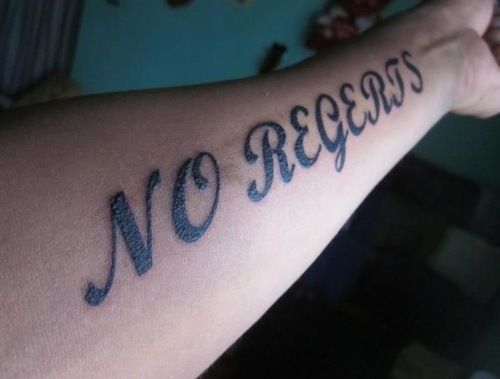Clean Slate
Article By: admin on http://reviewantiaging.com/clean-slate/
Is your ex’s name still lingering on your body or do you have embarrassing ink mistakes from your teenage years? Fear not, this laser will help erase that #facepalm.

We find out more about the Picosecond laser from Dr Kevin Chua at Drs Chua & Partners:

- You’re one of the pioneers to start tattoo removal treatments for your patients. What made you offer this service?
I’m not a pioneer. I just treat a lot more tattoos than most doctors. I saw a gap in the market and took advantage of it. I was getting good results so word spread.
- What are the advancements in tattoo removal and how is the current machine you’re using different?
The advancement has been in the laser pulse duration and keeping it stable. That’s the Pico-second difference. The shorter pulse duration means more energy can be delivered to a specific area whilst leaving the surrounding tissue relatively safe.
- Is it true that different colour inks respond differently? What are the hardest colours to remove and why?
Blue and green inks are difficult to treat with the traditional methods. The physics of tattoo removal mean that less laser energy is absorbed and therefore less breakup of the pigment. The new wavelength option on the PicoWay changes that, allowing faster clearance of these colours.
- How many sessions does it take to successfully remove a tattoo?
Most tattoos will clear between 3-6 sessions.
- Tattoo removal used to be very painful with horrible blistering after. Is the new Picosecond laser less traumatic?
Because of its shorter pulse duration (100 times shorter than the Q-Switched lasers), the energy delivered is more precise. This results in less blistering, typically less pain and quicker recovery.
- What is the weirdest tattoo you’ve had to remove?
Self-inflicted after a night out of heavy drinking. Cartoon drawing of sorts.
- Which body part is the most difficult to remove tattoo from?
Typically, the further away from the trunk, the harder. Ie – wrist, and ankles. This is because lymphatic drainage helps to remove pigments faster and those areas are the furthest away from the lymph nodes.
- What is the most common reason most people choose to remove tattoos?
The more common reasons include erasing the past – ex-gang members, ex-partners. Some want it because of change in religion. Some want to lighten their existing tattoo in order to put a new one in.



